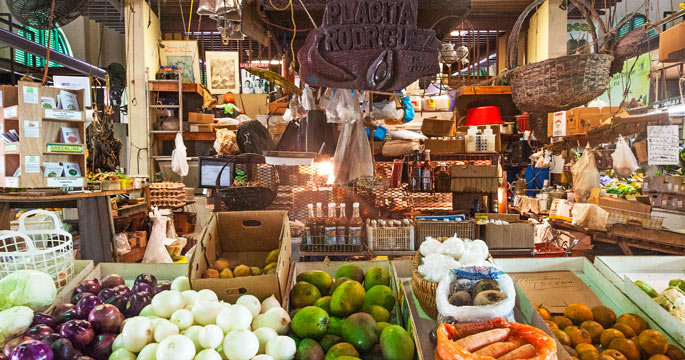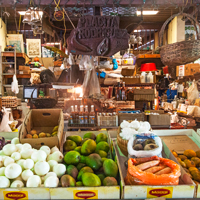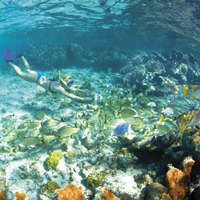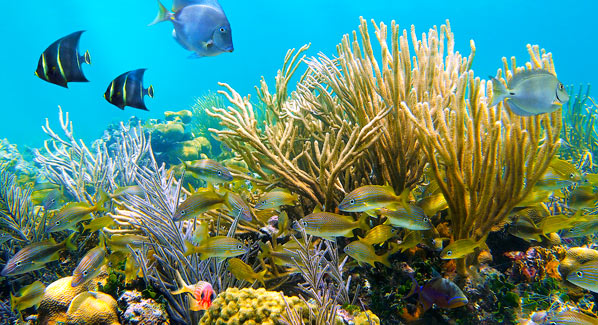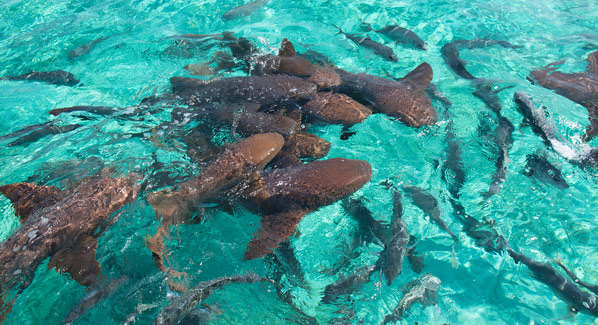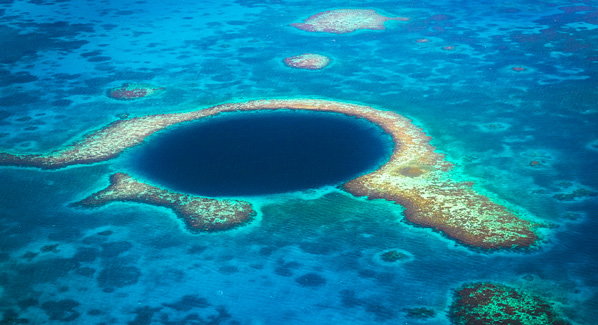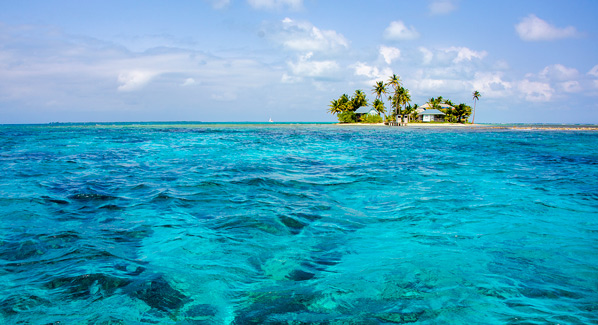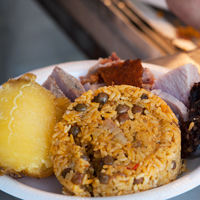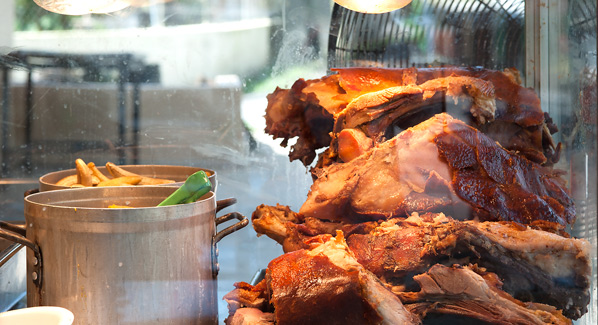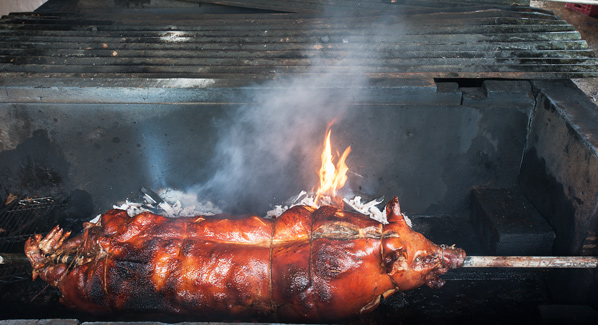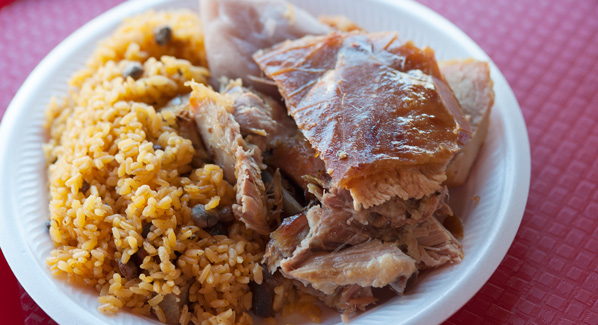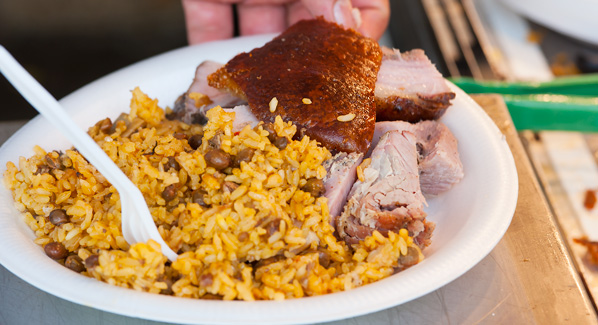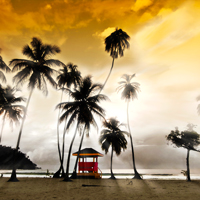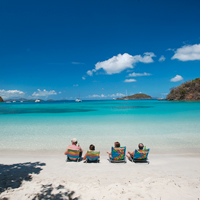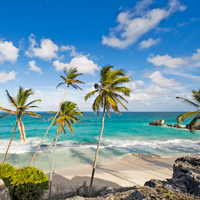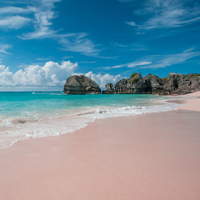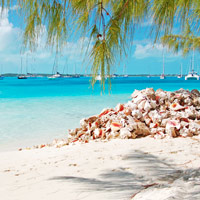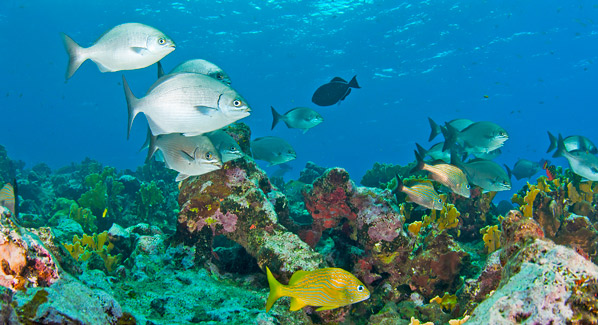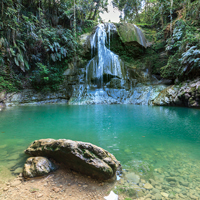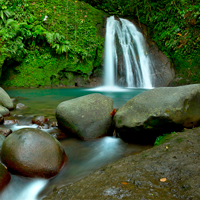Some of the Caribbean’s big draws are the beaches. They come in all colors from sugary white sand to glistening pewter and even slate black. But perhaps closest to our heart are the pink strands, often romantic and always breathtaking, in particular when the soft morning light hits the rosy granules. So, make sure you drag yourself out of bed early if you are lucky enough to be staying near one of these pink delights.
Bermuda: South Shore Beaches
While pink sand beaches and pink hotels seem to be synonymous with Bermuda, not all sandy strands on Bermuda are cast in pastel, as there is an occasional creamy white sand beach. But for the most part, the famed south shore is marked by cotton candy swirls of pink sands made from red foram, a tiny marine organism. The animal lives on the undersides of rocks and has a red skeleton. When it dies it mixes with bits of coral and broken shells, giving the sands their signature pink hues.
The Bermuda South Shore Park is an impressive stretch of coast lined with beaches. There you’ll find grassy areas for picnics along the roadside, rolling dunes and plenty of dramatic rock formations. Each beach seems to have a private cove that’s sheltered from ocean swells, and perfect for splashing around. Between Warwick Parish and Southampton Parish you’ll find a selection of pink beaches like Jobson’s Cove, Warwick Long Bay and the most well-known and popular stretch: Horseshoe Bay. Head to Church Bay at the far end and grab a mask and snorkel or West Whale Bay where you might see humpback whales migrating north to their summer feeding grounds during the spring.
Where to stay: Perched on a hilltop with the sea off in the distance is the Fairmont Southampton, a soup-to-nuts resort with golf, spa and a beachside watersports center. Their jitney takes guests on a one-minute ride to and from the beach.
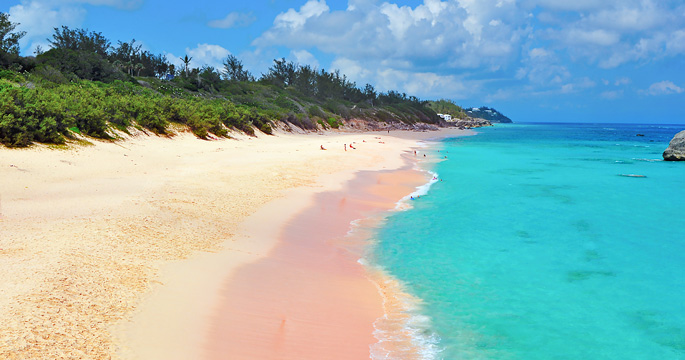
Horseshoe Beach is the most popular beach on the south shore of Bermuda. Summer months may bring crowds but there is always a stretch of beach to call your own. Photo: iStock
Barbados: Crane Beach
The combination of turquoise blue waters, pink sands and feathering palms, all set against a backdrop of dramatic cliffs, certainly makes Crane’s Beach a striking postcard image. You might think that this splendid stretch of beach was named for a long-necked bird. But in reality, the crane in question was a tall, gantry-like metal hoist that once sat cliffside, and was used to unload ships. The site is no longer a cargo port, and is instead touted as one of the 10 best beaches in the world by the Lifestyles of the Rich and Famous. It has also served as a backdrop for hundreds of wedding photos.
Seas are occasional calm enough for casual swims, but more often the waves that strike the island’s exposed eastern coast create currents and a strong shore break. That’s when surfers head out and boogie boarders are seen lining up. For the mere spectator there are soft sands, a coral reef offshore and swimming in more protected areas. Guests of the namesake cliffside resort can descend 100 steps or hop a ride in the glass-front elevator to the sands, where staff is on hand to set up umbrellas and chairs. Sundays are popular with both locals and visitors, as the resort’s sea view restaurant, L’Azure, hosts a Bajan buffet with live gospel music.
Where to stay: The only resort on the island’s southeast coast just happens to be the oldest resort on the Barbados. The Crane has a botanical garden setting and sits anchored on a cliff overlooking the sea. Book a room with a plunge pool on your balcony for the ultimate experience.
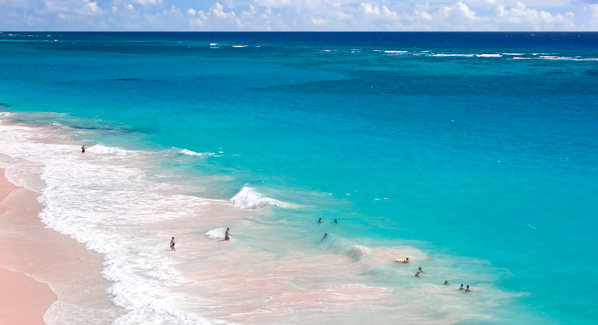
Swimmers and boogie boarders take advantage of small waves at picturesque Crane Beach on Barbados. Photo: iStock
Bahamas Out Island-Harbour Island
Harbour Island measures just three miles in length, and most of its eastern shore is blessed with a pink sand beach so soft it pours like flour, and shimmers in hues from subtle blush to salmon. The sands are protected by a coral reef that runs the length of the beach and is just a five-minute swim from shore. Here, in canyons of Elkhorn coral you may see a Ridley sea turtle, bottlenose dolphin or even a small shark. Beachside strolls are a daily delight, and in late afternoon you may encounter horses and riders wading into the shore break.
Harbour Island is a favorite with celebrities, and many pass through with little notice, grateful for a respite or hideout from the paparazzi. The island’s slow-paced, low-key lifestyle is treasured by visitors who instantly become part of the community. Walking is a favorite form of conveyance, and golf carts are more common then cars. The local equivalent of restaurant row is Bay Street, where fishing boats bob in the harbor and roadside vendors with small roadside food stands offer up conch fritters, conch salad and fried fish, all pulled fresh from the sea just hours before.
Where to stay: Pink Sands is the definitive experience on Harbour Island, a boutique property with lush gardens and a bird sanctuary. Rooms are set back off the beach but close enough to follow a private path down to the pink sands.
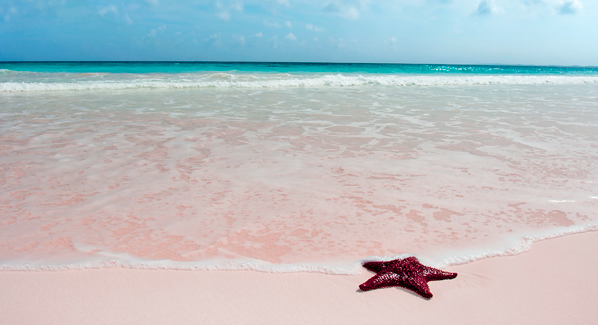
Gentle waves wash the pristine pink shores of Harbour Island, one of many treasured gems in the 700 islands of the Bahamas. Photo: Shane Gross/iStock

